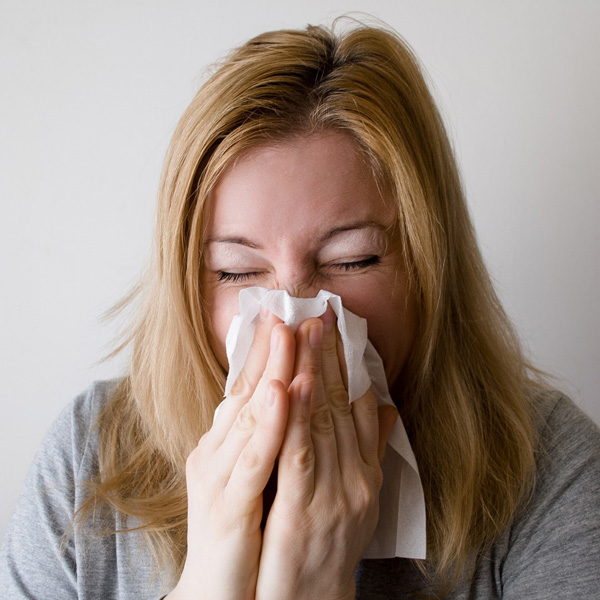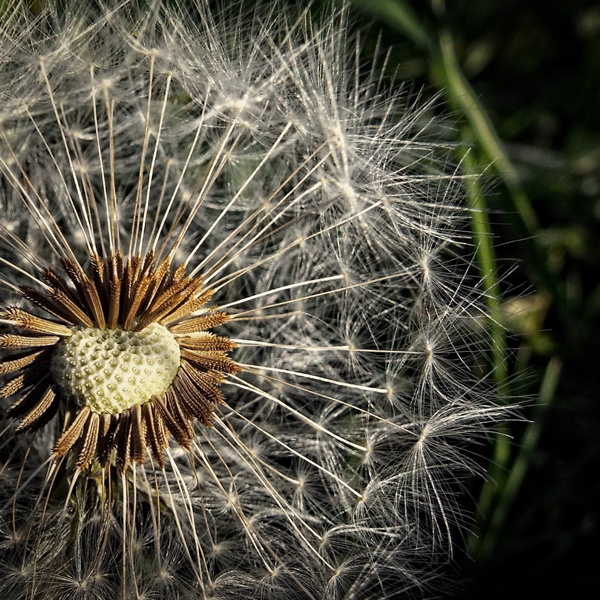How To Fight Hay Fever And Other Allergies At Home

With the bloom of nature at the start of Spring comes the season of pollen, which can extend until September with the approach of Fall. For those that suffer hay fever, keeping windows closed during peak allergy seasons like spring and being careful of what you may be carrying when reentering your home is the most obvious recommendation, but it is hard to live without opening a window from time to time. Instead, learn some efficient and easy tips for house cleaning that will make your daily life much more enjoyable.
What is Hay Fever?

Allergic Rhinitis, commonly known as Hay Fever, has nothing to do with suffering any kind of fever but it is an allergic sensitivity to airborne mold spores or pollen that comes not only from trees but also grass, pet hair, dust or even perfume. Depending on the person, it can be really unpleasant, going from a simple itchy nose to a disturbing sneezing and coughing, also displaying symptoms such as swollen eyes, stuffy nose or congestion.
Hay fever can be seasonal, caused by pollen or airborne mold spores, or perennial, due to dust mites, pet hair, dander and insects. Whatever the origin, the best way to avoid hay fever is by eliminating or decreasing your exposure to said allergens.
7 Simple house cleaning tips:

In order to get rid of allergens, it is important to clean your house regularly, minimum once a week. Follow our easy tips to be as efficient as possible:
1. Get well equipped
You need proper gear if you suffer from allergies when cleaning. Wear a protective mask and gloves to avoid all the dust reaching your face by air or touch, and when you are done with cleaning is best as well to change to a fresh set of clothes.
Concerning materials, it is better to skip cotton or paper towels when cleaning and opt instead for microfiber, since it attracts dust much better and is more environmentally friendly. Plus, before using those microfiber mops and cleaning cloths, be sure to dampen them to attract dust much more effectively.
For those with a severe allergy, you will definitely need a vacuum cleaner since is the most effective way of capturing the allergens attached to floors and rugs. Make sure to have one with HEPA filters to capture as many allergens as possible. Lastly, be careful with what cleaning products you choose since scented cleaners or detergents could emphasize your allergies.
2. Pay attention to humidity
Control indoor temperature and humidity. Dust mites and mold spores, which we don’t really like, love heat and humidity. By maintaining a temperature between 20 ̊C and 22 ̊C and a humidity level of no more than 50 percent you can avoid their proliferation. In addition, keep moisture from getting into the home. Wet or leaky pipes, windows, doors, basements, walls, will allow water to collect, making it easy for mold and mildew to grow in your home.
3. Clean your entrance door
One of the best tricks to reduce allergens in your home is to prevent them from coming in. At least weekly, clean outside entryways by sweeping or hosing away pollen. Have everyone in the family take off their shoes before getting into the house, by storing outerwear and shoes by the entrance rather than in bedrooms, to keep pollen away. You can as well use some plastic containers to keep shoes or coats that you are not using at the current season, thus avoiding them to end up covered in dust while they are not used.
4. Regularity, room by room and everywhere
It is important to dust off your house completely and not forgetting any surface. Vacuum minimum once a week, even twice during allergen peaks, not only the floor but also curtains and furniture like sofas. You have to do it room by room starting by the bedroom, the kitchen, bathroom and living room. In that way, you can just close the door once the first room is done to avoid any dust to settle back in, preserving the environment you just created.
5. Avoid carpets and rugs
If possible, don’t have carpets at home and as few rugs as possible, even less if they have a long pile, since the longer the pile the easier it is for allergens to attach. Sadly, carpets are the most notorious places for collecting pet dander, pollen and dust mites, meaning that if you neglect to clean this surface thoroughly, you’ll never eradicate them. Also, carpet fiber, padding, and the glue required to hold them together can also cause allergic reactions, so if you can’t figure out why your eyes are itchy or your nose won’t stop running when you’re home, your carpet may be the one to blame.
6. Wash sheets weekly
The bedroom is the best place to start cleaning, as it may be the one with the most allergens since in general, we spend a lot of time in bed. Wash your bedsheets once a week in 54℃ hot water to kill any dust mites and their eggs, and if there is mold, use bleach. An extra step to avoid part of these problems would be buying allergy-proof bedding. Then, before putting your fresh bed linen, it is always good to vacuum the mattress in order to remove all the body cells, dust mites and pollen that can be on it.
Lastly, don’t dry your sheets outside in the worst periods of the year… you would just bring more pollen home.
7. Keep the bathroom free of mold
Minimizing moisture is of prime importance, so the bathroom is the main worry on this subject. Use soap, water, and a brush to clean surfaces that mold may enjoy. However, remember that soap won't kill existing mold, so use a mold-killing cleaning product to close the deal. Keep the room well-ventilated while cleaning, and rinse all surfaces well with hot water. Wash the shower curtains once a month as well.
And here is an extra tip: pay attention to what you eat. If you increase your intake of foods with natural antihistamine properties such as garlic, onions, citrus and apples, it could reduce your allergies. And who knows, maybe you can improve your diet on the process.